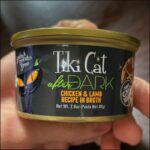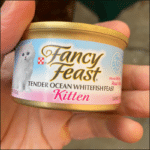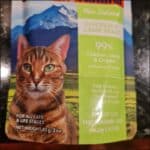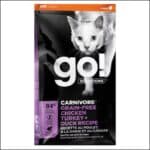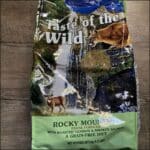Quick answer: Aim for 45% of more protein on a dry basis to help combat shedding in cats.
Make sure the cat food is a complete meal per AAFCO’s nutrition guidelines.
5 Best Cat Food for Excessive Shedding
I filtered popular cat foods for meeting protein requirements and being complete meals.
All are the best rated from my testing.
Tiki Cat After Dark is the best overall, with a huge protein content and is a complete meal for any age.
More below in this guide to the best cat food for excessive shedding.
I have a background in nutrition and research and test most of the products recommended.
This article isn’t a replacement for medical advice.
See more about us here.
What to Look For in Cat Food to Help With Shedding?
Quick answers:
- Diet and shedding:
- Excessive shedding can indicate poor diet or environmental issues like flea allergy dermatitis.
- High protein diet:
- Aim for a diet with 45% protein (dry matter) to support hair and skin health, as hair is primarily made of keratin.
- Complete cat food:
- Ensure the food is complete and balanced with essential vitamins and minerals like zinc, iron, and biotin to prevent hair loss.
- Avoid foods high in phytates (grains) that hinder nutrient absorption.
- Nutritional adequacy:
- Look for foods that meet AAFCO’s nutritional guidelines to ensure all dietary needs are met.
- Elimination diet:
- Consider this with a vet if nutritional improvements don’t reduce shedding.
- Target food allergies with novel protein or hydrolyzed food for 6-8 weeks.
- Environmental factors:
- Address environmental causes like flea allergy dermatitis separately through thorough cleaning.
Long answers:
Hair loss is a sign of poor diet.
But it’s also a sign of environmental problems like flea allergy dermatitis.
First, let’s look at how choosing the right cat food can help reduce excessive shedding.
High Protein Diet
Hair is made of a protein called keratin.
An estimated 25-30% of dietary protein goes to hair and skin growth.
For this reason, experts suggest a high protein diet.
The recommendation is for 45% protein (dry matter).
Use a calculator to find out if your cat food is a protein-rich option.
To do this, check the crude nutritional content on the label.
Then enter that into the calculator to find out the dry basis protein.
Look for foods over 45% protein on a dry matter basis to combat shedding.
Choose Complete Cat Food
A deficiency in vitamins and minerals impacts your cats skin and coat health.
Zinc, iron, and biotin deficiency can lead to hair loss.
All help the hair growth cycle in various ways.
Shedding may occur when food doesn’t have enough nutrition.
To make sure your cat gets all the vitamins and minerals they need, look for the statement of nutritional adequacy.
You’ll want to check the cat food is a complete and balanced food source per AAFCO’s nutrition guidelines.
Steer clear of phytate rich foods (high in grains) as these decrease nutrient absorption.
If the first ingredient is wheat, then don’t bother.
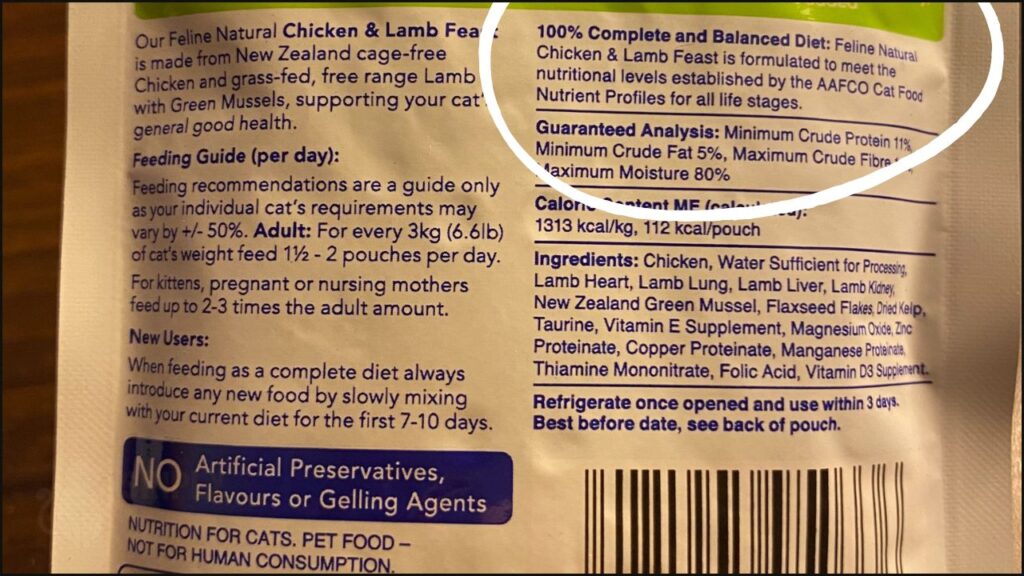
Try an Elimination Diet
If nothing else works, discuss an elimination diet with your vet.
This helps if the hair loss is from food reactions, which can cause hair loss from scratching (pruritis).
Shedding is a sign of two things:
- Deficiency
- Food reactions
If boosting the quality of nutrition doesn’t help, it’s time to consider food allergies.
Here’s some proof it works:
79% of cats with pruritis and self-inflicted hair loss saw improvement with a lamb and rice elimination diet!
The approach is to use a novel protein or hydrolyzed cat food for 6-8 weeks.
Unfortunately, this won’t work if the cause is environmental (e.g. flea allergy dermatitis).
In that case you’ll have to tackle the environment with cleaning.
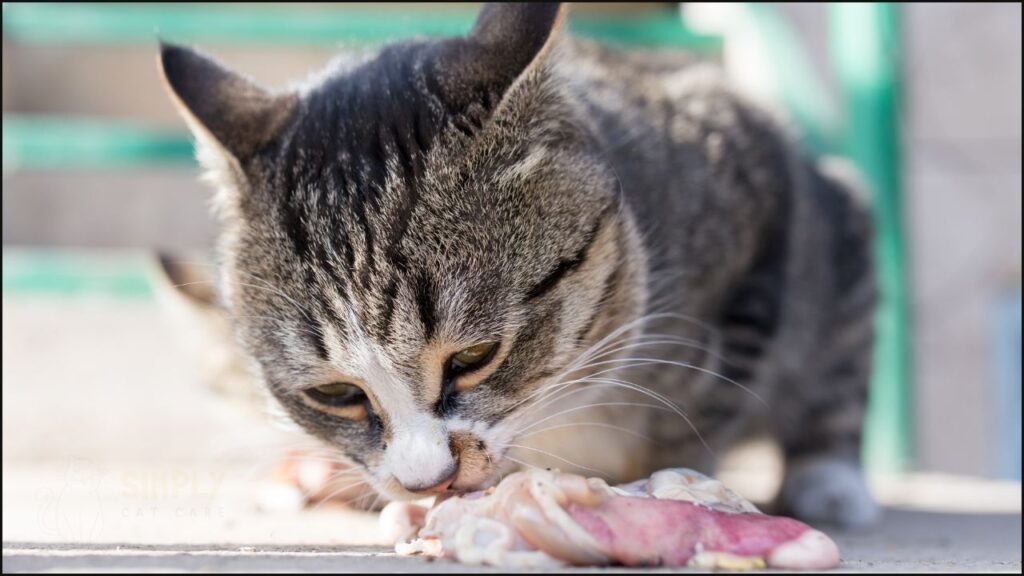
FAQ
Quick answers:
- Causes of cat shedding?
- Seasonal changes affect shedding; more common in spring and fall.
- Stress, including environmental changes and boredom, can lead to hair loss.
- Diseases like hyperthyroidism or parasites cause excessive shedding.
- Nutrient deficiencies (e.g., protein, zinc) can increase shedding.
- Environmental allergens such as dust mites and molds may cause hair loss.
- Dietary allergens can lead to dermatitis and shedding.
- Certain breeds (e.g., Persians, Russian Blues) naturally shed more.
- How to manage shedding?
- Provide environmental enrichment (cat trees, tunnels, interactive toys).
- Regular veterinary checkups to rule out diseases.
- Ensure a balanced diet rich in essential nutrients.
- Maintain cleanliness to reduce allergen exposure.
- Consider breed-specific grooming practices.
- Impact of diet on shedding?
- Vegan cat foods or those lacking in nutrients can increase shedding.
- Foods high in protein (45% or more on a dry basis) and low in phytates are recommended.
- Choose cat food that offers complete nutrition to reduce shedding.
- Should I be worried?
- Indicates possible poor nutrition or food allergies.
- Can affect muscle mass, immune health, and digestive health due to underlying poor nutrition.
- Could be a sign of allergies which causes discomfort and itching.
Long answers:
What Causes Shedding in Cats?
Many things cause hair loss:
- Seasonality
- Stress
- Disease
- Nutrient deficiency
- Environmental allergens
- Dietary allergens
- Breed
Let’s look at each:
Seasonality
Cats lose hair at different times.
Shedding is normal to a small extent, during fall and spring. Hair growth is better in summer.
Indoor cats are more prone to year round shedding.
Stress
Another cause of alopecia in cats is stress.
Changes to environment and ownership can trigger hair loss (e.g. loss of a companion).
Limiting outdoor access is beneficial to avoid hazards, but can trigger boredom.
Try environmental enrichment. This includes adding stimulating items:
- Cat tress
- Tunnels
- Caves
- Interactive toys
- Areas to perch
Stress can cause self-inflicting hair loss from excess grooming.
Read more:
Disease
Shedding is normal in cats, but excessive hair loss is a sign of disease.
Look for:
- Patchy hair loss
- Increase in scratching
- Lesions
- Signs of illness (e.g. fatigue)
These are symptoms of disease. That includes hyperthyroidism or parasites.
A vet workup will help identify the cause of the hair loss and shedding.
Nutrient Deficiency
Nutrients are needed for healthy hair and coat.
This includes:
- Protein
- Zinc
- Iron
- Biotin
Deficiency is rare, but can increase shedding and hair loss in cats.
High phytate diets (e.g. cereals) bind zinc and make it harder to absorb.
Meat rich diets are best.
Environmental Allergens
Try keep things clean.
One case study found dust mites and molds led to pruritis related hair loss in three littermates.
Fleas are also a common cause of hair loss.
The problem resolved with anti-histamines and hyposensitization therapy.
Good cleaning practices can help cut risk.
Learn more:
Dietary Allergies
Food can cause shedding.
11% of dermatitis is related to dietary allergies.
The problem is more common in younger cats.
The solution is an elimination diet for 6-8 weeks using novel protein or hydrolyzed cat food.
Breed
Some breeds shed more.
Persians, Russian Blues, and Main Coon’s shed more than others.
Daily brushing can help curtail shedding to some extent in some br
Can Cat Food Make a Cat Shed More?
Vegan cat foods tend to decrease nutrient absorption and aren’t ideal for shedding.
Supplemental cat food doesn’t offer the full range of nutrients cats need.
Over-reliance on these foods may cause shedding.
Learn more:
What Food Helps Cats Stop Shedding?
Cat food with:
- 45% protein dry basis or more
- Complete nutrition
- Low phytate content
Cat food that meets these requirements will help keep shedding down.
Our top three picks in this article are free from phytate and the best options for your cat.
Is Excessive Shedding Bad for Cats?
Shedding is a sign of:
- Poor nutrition (or)
- Food allergies
Hair isn’t that important to cats in itself, but poor nutrition affects other areas of health including:
- Muscle mass
- Immune health
- Digestive health
Allergies can involve itching and discomfort.
Conclusion
Stress, disease and diet can cause excessive shedding.
If your vet rules out serious problems, try addressing diet.
A high-protein novel cat food that meets AAFCO’s nutrient guidelines as a sole diet source is best.
Shedding is normal in oriental cat breeds and other cats during fall.
Brushing your cat helps to clear up excess hair.
>> Our best cat food for excessive shedding: Tiki Cat After Dark

